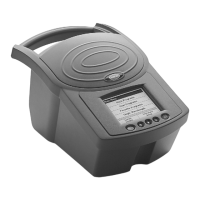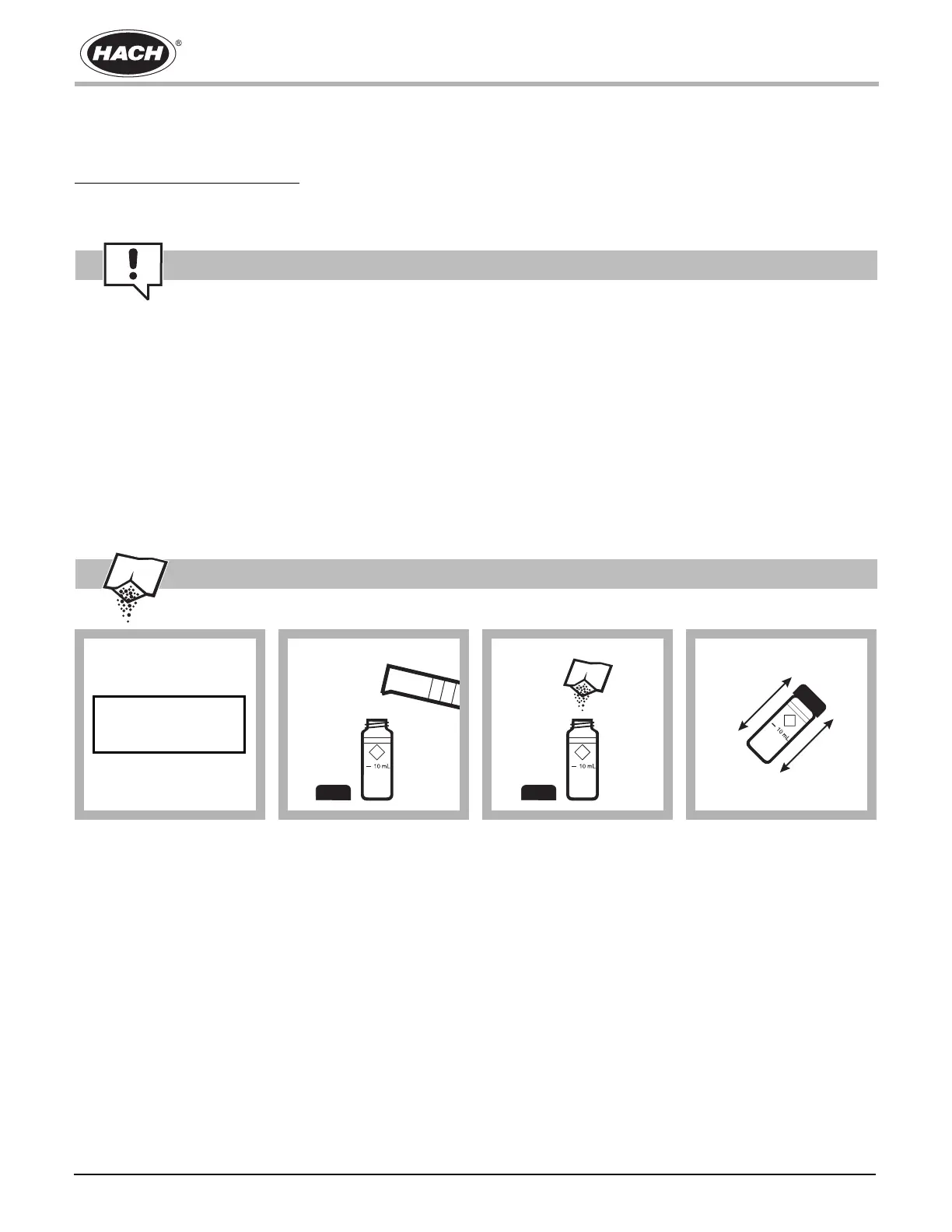DR/2400
Cyanide
Cyanide_PP_Other_PPZ_Eng_Ody.fm Page 1 of 8
• Use a water bath to maintain the optimum temperature for the reaction in this test (25 °C). Samples at less than 23 °C require
longer reaction times, and samples at greater than 25 °C yield low results.
• For more accurate results, determine a reagent blank value for each new lot of reagent. Follow the procedure using deionized
water in place of the sample. Subtract the reagent blank value from the final results or perform a reagent blank adjust
. See the
instrument manual for more information on Running a Reagent Blank.
• Wipe the outside of sample cells before each insertion into the instrument cell holder. Use a damp towel followed by a dry one to
remove fingerprints or other marks.
• The timing for steps 2 through 8 is critical. You may find it useful to open the necessary reagents before starting this sequence.
• All samples to be analyzed for cyanide should be treated by acid distillation except when experience has shown that there is no
difference in results obtained with or without distillation. See Acid Distillation on page 5.
• See Pollution Prevention and Waste Management on page 3 for proper disposal of solutions containing cyanide.
Cyanide
Method 8027
Pyridine-Pyrazalone Method*
* Adapted from Epstein, Joseph, Anal. Chem. 19(4), 272 (1947)
Powder Pillows
(0.001 to 0.240 mg/L CN
–
)
Scope and Application: For water, wastewater, and seawater
1. Touch
Hach Programs.
Select program
160 Cyanide.
Touch
Start.
2. Using a graduated
cylinder, fill a round
sample cell with a 10 mL
of sample.
3. Add the contents of
one CyaniVer 3 Cyanide
Reagent Powder Pillow.
Cap. (This is the prepared
sample.)
4. Shake the sample cell
for 30 seconds.
Tips and Techniques
Powder Pillows Method 8027
Hach Programs

